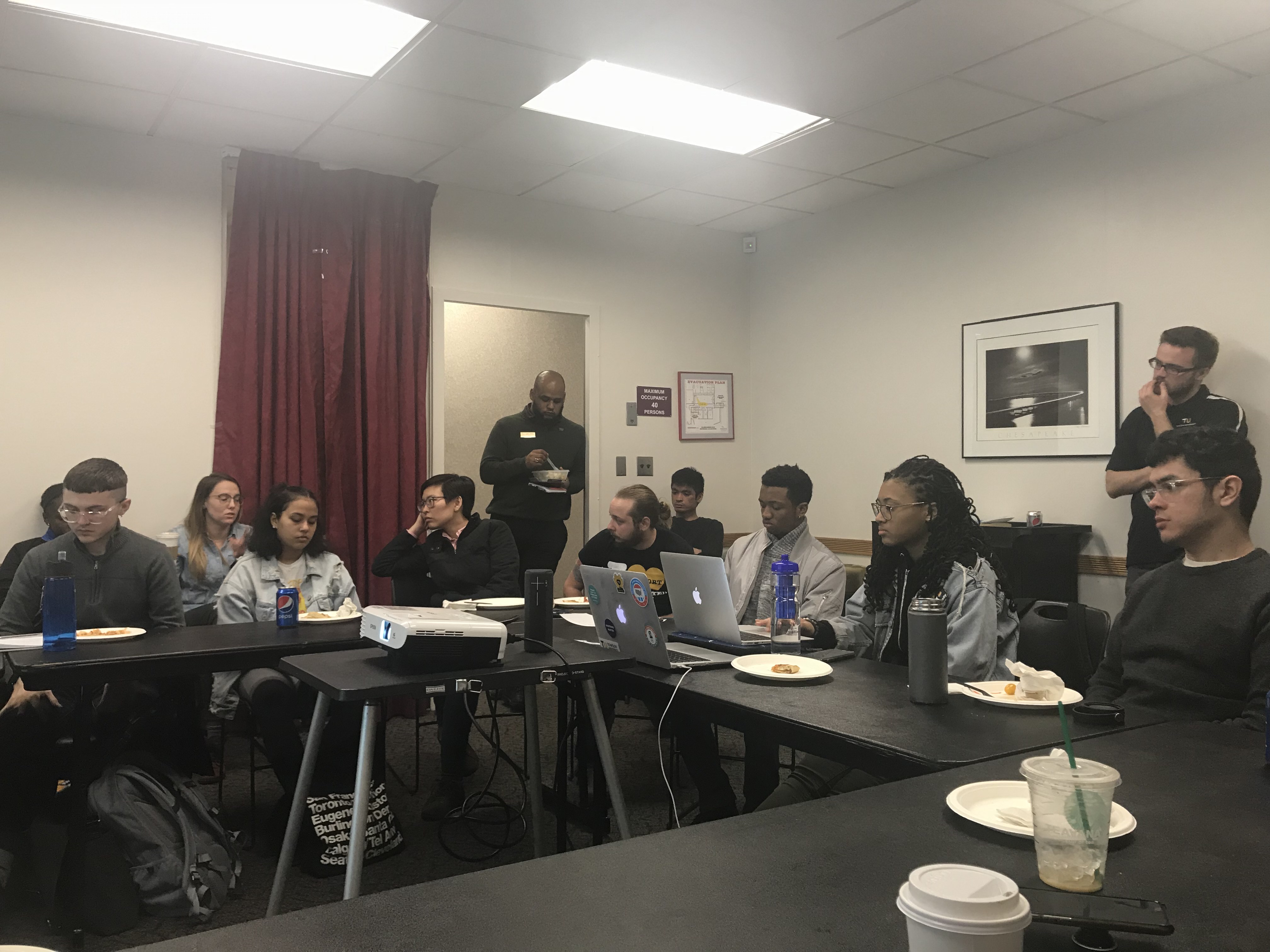
Students explore ways to support Transgender individuals
By Sophia Bates, Assistant News Editor
Photo by Sophia Bates/ The Towerlight
In the Life, an LGTBQ+ community-oriented club, facilitated the New York Times Talk “What’s the T: Do Trans Lives Matter in Youth?” March 13 in an effort to teach attendees about ways they can help support transgender individuals.
Junior Edmund Savage and sophomore Khouri Lassiter, both on the leadership board for In the Life, started the dialogue by playing a video about queer sex education and summarizing three articles focusing on discriminatory policies and laws regarding LGBTQ+ rights.
One of the first points of discussion was around “no promo homo” laws, which are laws that stigmatize LGTBQ+ people. They then allowed people to share personal opinion and backstory around the topic.
In 2017, Maryland passed Senate Bill 212, the Fairness for All Marylanders Act, which updated Maryland’s Civil Rights Law to include protection on the basis of gender identity, according to Equality Maryland, a civil rights organization.
Erin Rook, the Assistant Director of LGBTQ+ Student Diversity and Development, attended the talk and raised a point that while Maryland protects those within the LGBTQ+ community, not all states do.
“One thing to remember that Maryland laws protect sexual orientation and gender identity, but in a lot of states you can be fired or kicked out of your home,” Rook said.
After the introductory period, attendees were invited to engage in open dialogue guided by pre-written questions from Savage and Lassiter, including how the education system is failing to protect transgender students and LGBTQ+ safe spaces.
At the end of the discussion, senior Briana Marshall, who is not a part of the LGBTQ+ community, asked about how to be an ally.
“Being a dancer and being in this art community, I feel like the LGBTQ+ community has always been a part of my life and my existence, and I don’t think I’ve ever considered myself an ally because I don’t think I do enough to be considered an ally,” Marshall said. “As someone who deeply cares about people from his community, what do you want to see from allies, or how can someone like myself further support the community?”
In response, Lassiter acknowledged that supporting the community is one of the key components to be an ally.
“Just keep doing what you’re doing,” Lassiter said. “If you’re already supporting the community, you are already an ally because you support us.”
Lassiter addressed larger topics than support, too.
“If you see something homophobic or transphobic, and it’s a safe space where you aren’t put in danger, then address it,” Lassiter said.
Savage added that sharing one’s preferred pronouns plays a role in being an ally as well.
“I think even just sharing your pronouns is a good way to show that you’re trying to build an inclusive environment,” Savage said.
Savage and Lassiter said that this was an important topic for the talk due to the lack of visibility within the community that transgenders face.
“The reason why we really wanted to do this is because when it comes to LGBTQ representation there is a lot of representation for gay individuals, but there is not a lot of representation for other people apart of our community, especially the trans community,” Savage said.
Lassiter added that the talk also was meant to raise awareness on the issues that transgender people face daily.
“There is not a lot of visibility for trans people,” Lassiter said. “They have many different struggles every single day. I know as a queer woman, I can just go into a restroom and use the restroom, but for a trans woman it might be a whole different obstacle that they have to face, and we really just wanted to shed light on that.”
Graduate Assistant for Civic Engagement with Civic Engagement and Social Responsibility Kincade Stirek, who helped organize the talk, said that this topic empowers the university to be more inclusive.
“TU is trying to work to be a more inclusive university, so this is just addressing how we are working to become a more inclusive university,” Stirek said. “There could be a lot of students that aren’t even out yet, so it could just be showing the resources that are available to students.”

